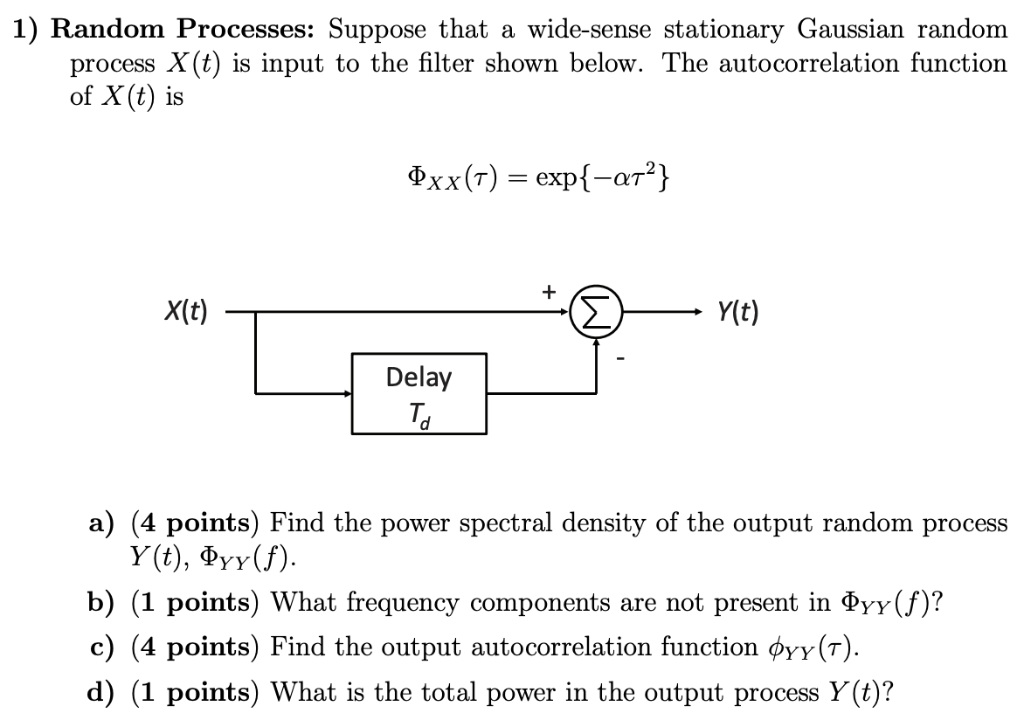

In: Handbook of Economic Forecasting, vol.
RANDOM PROCESSES SERIES
Priestley, M.B.: Spectral Analysis and Time Series (Volume 1 and 2). McKenzie, E.: Some ARMA models for dependent sequences of Poisson counts. Malliaris, A.G., Brock, W.A.: Stochastic Methods in Economics and Finance. Makridakis, S.: Accuracy measures: theoretical and practical concerns. MacDonald, I., Zucchini, W.: Hidden Markov and Other Models for Discrete-Valued Time Series. The variable X can have a discrete set of values xj at a given time t, or a continuum of values x may be available. Koopmans, L.H.: The Spectral Analysis of Time Series. A random or stochastic process is a random variable X ( t ), at each time t, that evolves in time by some random mechanism (of course, the time variable can be replaced by a space variable, or some other variable in application).

Kedem, B., Fokianos, K.: Regression Models for Time Series Analysis. Fall, Spring Systematic development of the concept of probability and random process theory. 2.1 Random variables 26 2.2 The law of averages 30 2.3 Discrete and.

Jacobs, P., Lewis, P.: Stationary discrete autoregressive-moving average time series generated by mixtures. Probability and Random Processes, Third edition.

Hatanaka, M.: Time-Series-Based Econometrics. (eds.) The Palgrave Handbook of Econometrics, Applied Econometrics, vol. At its simplest form, it involves a variable changing at a random rate through. Springer, Berlin (2009)Ĭlements, M., Harvey, D.: Forecast combination and encompassing. Sub- Gaussian and pre-Gaussian random variables Orlicz spaces of random variables Regularity of sample paths of a stochastic process Pre-Gaussian processes. Stochastic process is the process of some values changing randomly over time. (eds.) Handbook of Financial Time Series, Part III: Topics in Continuous Time Processes. Often, from the notation, we drop the variable, and write just X(t). To every S, there corresponds a function of time (a sample function) X(t ). Holden-Day, San Francisco (1970)īrockwell, P.J.: Lévy-driven continuous-time ARMA processes. A random process(a.k.a stochastic process) is a mapping from the sample space into an ensemble of time functions (known as sample functions). 8, 261–275 (1987)īox, G.E.P., Jenkins, G.M.: Time Series Analysis, Forecasting and Control. The important property of time data is the fact that they are ordered chronologically in time.Īl-Osh, M.A., Alzaid, A.A.: First-order integer-valued autoregressive (INAR(1)) process. As to the regularity, financial data are often irregularly observed ( irregularly spaced data), e.g., the stock prices in stock exchanges are quoted usually in moments of transactions from the opening to closing time of trading day, the frequency of transactions being usually lower in the morning after opening, during the lunch time, and later in the afternoon before closing (a possible approach in such a situation assigns the closing or prevailing price to this day). Experiment outcome is, which is a whole function. The frequency of records is understood either as the lengths of intervals between particular observations (e.g., calendar months) or the regularity of observations (e.g., each trading day). A random process is a family of random variables indexed by a parameter. The comparisons of relative errors and computational time between the SGHW method and the SRM demonstrate the accuracy and efficiency of the proposed method.Data typical for economic and financial practice are time data, i.e., values of an economic variable (or variables in multivariate case) observed in a time interval with a given frequency of records (each trading day, in moments of transactions, monthly, etc.). (2) The proposed method contains more accurate probability information and has a higher computational efficiency. The superior fitting effect between evolutionary power spectral density (EPSD) obtained from the samples using the SGHW method and the EPSD model proves the validity and effectiveness of the SGHW method. Fewer random variables also reduce the difficulty of random process analysis. A smaller number of components greatly reduces the number of random variables. The advantages of the proposed method are (1) a stochastic process with accurate probability information can be obtained by retaining fewer components. Integrating the general expression of the generalized harmonic wavelet (GHW)-based spectral representation method (SRM) and the idea of stochastic harmonic function (SHF), a novel stochastic generalized harmonic wavelet (SGHW) method for fully nonstationary stochastic processes, is established. I am currently teaching a graduate course ELE 525: Random Processes in Information Systems at Princeton University on Mondays and Wednesdays in the Fall.


 0 kommentar(er)
0 kommentar(er)
